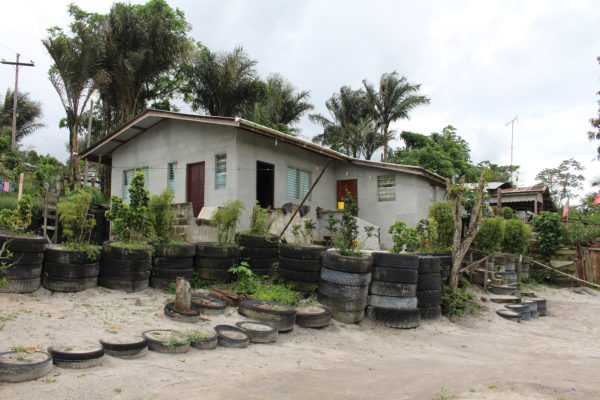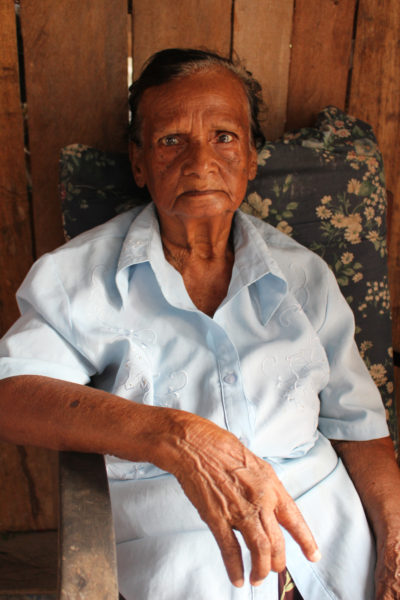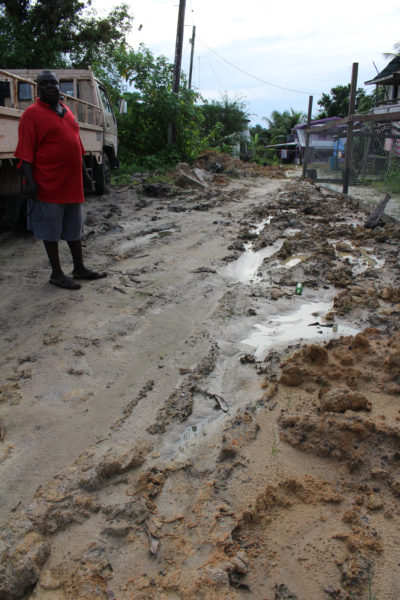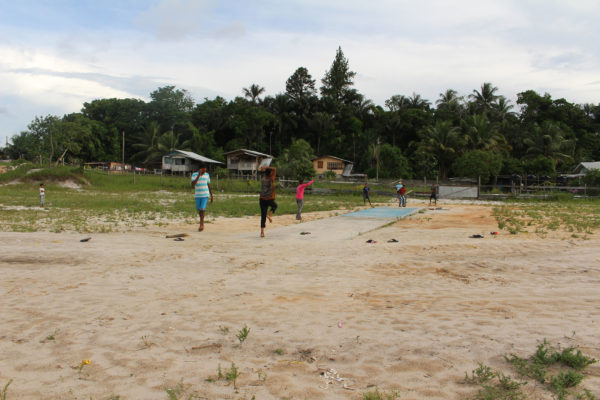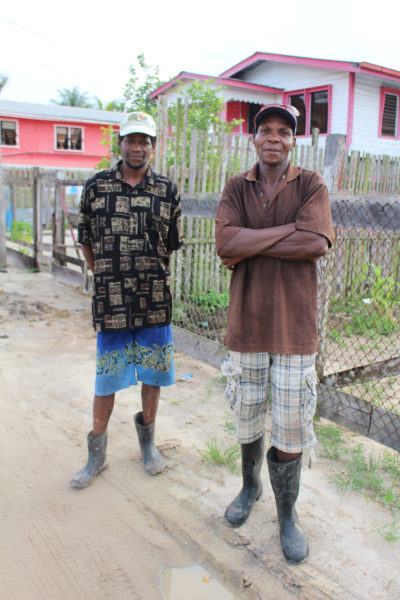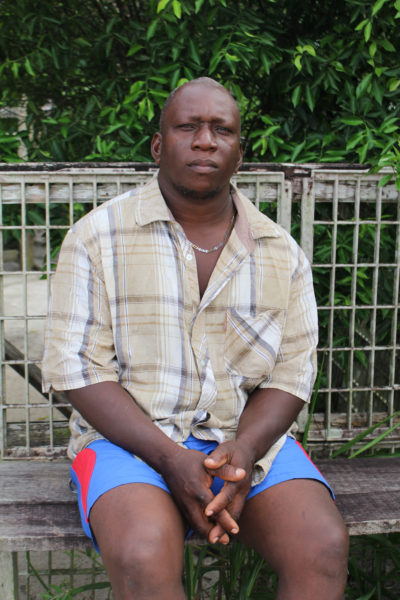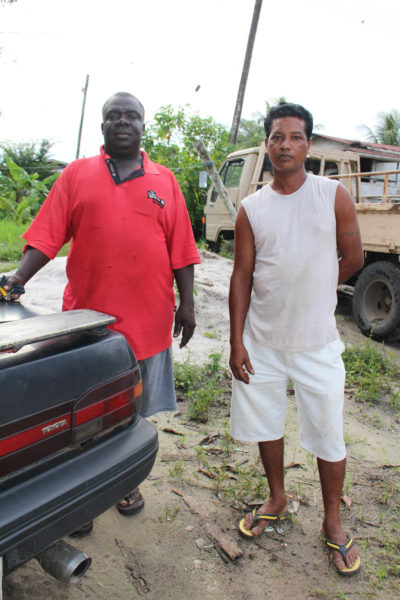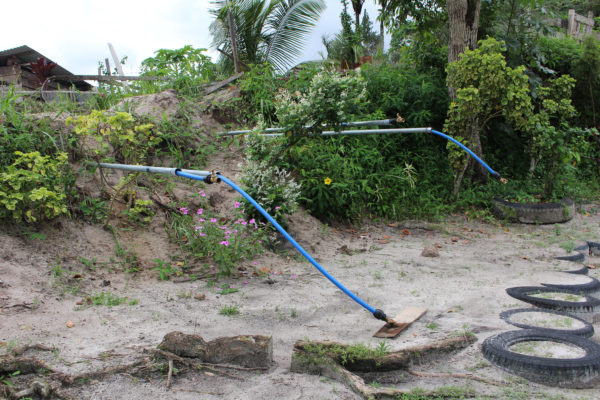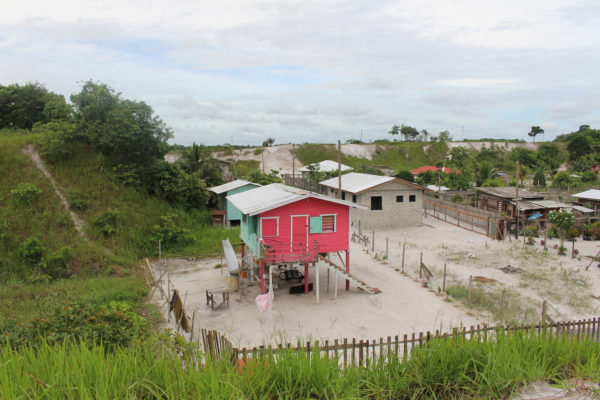Hill Foot, as its name suggests, sits at the foot of a hill. To be precise, the village can be found at the bottom of the first hill on the Soesdyke-Linden Highway. Being a good mile from the Soesdyke junction, the village is sometimes referred to as One Mile.
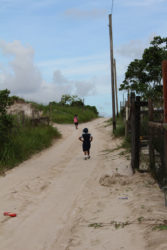
One can get to Hill Foot by taking a Kuru Kururu bus from the Timehri bus park in Georgetown or by taking a Timehri bus, getting off at the Soesdyke junction and taking a taxi from among the number of cabs parked there.
Hill Foot, a bright little village, is home to approximately 800 people.
When the World Beyond Georgetown arrived a good number of men were sitting in the bus shed and nearby a group pelted mangoes out of a tree. Just at the head of the road, a spanking new well was still being checked and adjusted by Guyana Water Inc (GWI) contractors.
At a nearby residence a group of women sat chatting excitedly. They pointed to four pipelines hanging in the yard. They were installed only a week ago and although they are using the water to wash and bathe, they were told by GWI workers that the water was not safe to drink as yet and they should wait awhile.
They did not want to have their photographs taken, but directed the World Beyond Georgetown to an elderly woman living opposite, but not before pointing out a pond situated behind the house, which they used sometimes to wash and bathe when they could not make it to the creek situated a mile and a half away.
“Meh use to live Success den come in 66 [1966] to live in Soesdyke. Me and anada fren come way hey to wuk,” Soursatie Ramsarran said.
She said they worked in Timehri as farm labourers. “We use to plant cabbage and pick orange; all ting. Den afta we pick it, we use to push it in de wheelbarrow to carry it to de docks and dey use to load it pun de boat. Now me ah 83. Me get ole now. Me cyan wuk. Me gat two daughter and four son.”
She said that she had also worked at the now defunct Guyana Refrigerators Ltd as a gardener. “An den Rambarran hear bout meh an come fuh meh wuk wid dem. Suh meh come wuk ah Rambarran Fowl Farm,” she said.
“Wen meh fuss come hey, it na bin had no house; bin a wan sandpit. Only last week deh come an gave we wata. Before den we use to had to walk to de creek fuh full wata. We does wash an cook wid it.”
Ramsarran they did not bathe in the creek, only filled their buckets and bottles which they fetched home to do their washing.
She buys bottled water from a truck that goes to the area, but she is hoping that the tap water they are now receiving can be purified so she can use it to drink and save her little pension.
What she likes about living in Hill Foot? “Nobady don bada yo hey. Dem neighba does watch out fuh meh an call an see if meh arite,” she said.
When asked about developments she would like to see, Ramsarran replied, “Well me na wan nothing. Me deh pun dead aready. Me jus wan de light in meh house.”
Uphill from Ramsarran is the Nazarene Church; a few poultry animals scurried along the path. Along the highway trucks speed past blaring their horns. On the other side, a pickup navigates its way up the hill from an eddo swamp with workers toiling away.
Back in the village, Gairy Cornette had walked to the front of his yard to use his pipe and stopped to chat. He has been living at Hill Foot for almost 35 years but is originally from Dartmouth on the Essequibo Coast. He works as a labourer at the Bounty Chicken Farm.
“Most persons living here squat here, but every year we pay a fee of $4,000,” he said. “Before time you could have squat here but not now, it really ain’t got space.
Since I come here, I find friendly people. We got vans coming in to sell greens, ration, and those things. Now we have the water and we’re really thankful for it.
“The creek that we used to get water from is situated about a mile and a half. We used to use the water to wash, drink and cook. We used to full up bottles with water then push them home in a wheelbarrow.”
Concerning life in Hill Foot, Cornette said, “Bare punishment deh hey. I stay here because it easier to get jobs here. Some people who live here farm behind Hill Foot in the eddo swamp.
“We have thieves around here plus the rum shop is nearby so when dem men drink they does behave miserable.
“We want proper roads here, a school and a playground.”
The closest schools, he said, are in Soesdyke or Kuru Kururu which his son attends. The highway is dangerous and he’s concerned about little children having to cross it to go to a nursery or primary school.
As we spoke children came walking over the side of the hill not wanting to take the long way around and walk through the entrance of Hill Foot before climbing the hill that Cornette lives on then back down to where they live below in the valley which the villagers call Sand Pit.
The village Cornette said, has two playgrounds, one belongs to Rambarran who owns the chicken farm and the others that the boys use is situated on someone’s property. “If the government could give us our own playground, it would be good,” he said.
Apart from the few developments he mentioned he would also like to see the village being provided with telephones.
Cornette also expressed concern over children staying away from school. “Most children here aren’t going to school,” he said. “Maybe the parents can’t afford it. Some of them start working at a small age. I’d like to see the authorities looking into this matter.”
Sitting on a bench talking with his nephew was Sherland Vaux, who was born in Hill Foot. He is a visitor now, having relocated elsewhere some eight years ago, but he holds Hill Foot dear to his heart.
“Some of the very first families to live here were Jettoo, Vaux, Walters, De Freitas, Hinds, Lall and Rambarran; how could I forget them?” he reflected.
“We struggled a lot. Growing up as a boy I enjoy running and playing football. We used to make cane juice, orange or mango for prizes for those who bring first or second or third. Children these days ain’t know about dem things that.”
A man driving a Canter truck stopped and Vaux, pointing at him, said, “That man is a good man to talk to. That is Mr Walters. He was one of the first persons to live here.”
Stephen Walters was agreeable, pointing the way to his residence before driving on.
Vaux said he was visiting Hill Foot because his sister’s lot needed a drain for the excess water to run off. Before leaving to get back to his family in Soesdyke, he said, “I’d be happy if Hill Foot can have landline phones, better roads and a proper drainage system.”
Down the street, Walters rested against a parked car and talked excitedly about his village.
“Hill Foot has existed about 65 years now,” he said. “I come here a lil boy. Say about when I was four years old. The village has about three races; Africans, Amerindians and East Indians.
“We live in unity. If something to be done, we call out the village and we get it done by self-help. Hill Foot was [accessed by] a fine track from the road before we get light, water and a road to come in.
“I fetched water a mile and a half; as soon as we hit home from school. Was three of us – brothers. We had to full a drum with our saucepans. You can’t make mommy come home and it ain’t got water in the drum. By the time we done, we so tired, we sleep.”
He smiled and continued, “[Now] I could go and turn on me pipe and water pelting out, man.
“Long time we didn’t had light; we had to use a flambeau. You always got to watch for snakes. Things better now. We just want landline phones and better roads. The cellphone eating out yo money.”
He pointed to a street nearby that road workers dug up to start working on a road but has been left in the same condition since.
“I want when you come in you got a lil tar road to put yo foot on. Or you can drive come here,” he said. “The promises was great. Every election they coming round with a big mike and promising we water but we got it now and we thankful for it. They could nice we up. Lil loam or tar and we gon thankful for it.”
